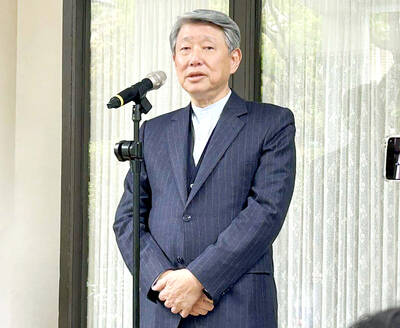China’s GDP growth may hit 9 percent this year from last year as increasing trade with Africa, Latin America and Russia is mitigating the effect of the stalling economy in the US and Europe, DBS Bank economist Chris Leung (梁兆基) said yesterday.
Leung’s forecast was the highest among all research institutions.
His forecast, which he attributed to the improving global economy and China’s ongoing shift toward a more balanced economy, was also stronger than the 7.5 percent forecast by the Chinese government.
If exports from China to African and South American markets advance at their 10-year average pace, the share of these regions would expand to almost 20 percent in 2020, from the current 10.3 percent, said Leung, who was last year invited by the Chinese government to help map out the nation’s future economic path.
“That is about equal to the present share of exports to the EU, making clear the immense importance and future potential of the South American and African markets,” he said.
Since growth in Western markets has stalled, China’s new leaders are seeking to restructure and strengthen the nation’s investment-driven economy, Leung said.
Telecommunications and sound recording apparatus make up the largest share of machinery and equipment exports to South American and African countries, he said, adding that China has provided loans to African allies on condition that they use telecoms systems made by Huawei Technologies (華為).
“That explains why Huawei smartphone sales have surged 40 percent a year in Africa and they are likely to continue to grow rapidly,” Leung said.
A rosy outlook for Chinese exports would be difficult in the medium term, with the trade surplus falling from its peak of 7.6 percent of GDP in 2007 to 3 percent to 5 percent this year, reflecting the persistent economic weakness of China’s major trading partners, he said.
Private consumption, which represents 35 percent of GDP, will not become a key driver of growth overnight, he said.

MULTIFACETED: A task force has analyzed possible scenarios and created responses to assist domestic industries in dealing with US tariffs, the economics minister said The Executive Yuan is tomorrow to announce countermeasures to US President Donald Trump’s planned reciprocal tariffs, although the details of the plan would not be made public until Monday next week, Minister of Economic Affairs J.W. Kuo (郭智輝) said yesterday. The Cabinet established an economic and trade task force in November last year to deal with US trade and tariff related issues, Kuo told reporters outside the legislature in Taipei. The task force has been analyzing and evaluating all kinds of scenarios to identify suitable responses and determine how best to assist domestic industries in managing the effects of Trump’s tariffs, he

TIGHT-LIPPED: UMC said it had no merger plans at the moment, after Nikkei Asia reported that the firm and GlobalFoundries were considering restarting merger talks United Microelectronics Corp (UMC, 聯電), the world’s No. 4 contract chipmaker, yesterday launched a new US$5 billion 12-inch chip factory in Singapore as part of its latest effort to diversify its manufacturing footprint amid growing geopolitical risks. The new factory, adjacent to UMC’s existing Singapore fab in the Pasir Res Wafer Fab Park, is scheduled to enter volume production next year, utilizing mature 22-nanometer and 28-nanometer process technologies, UMC said in a statement. The company plans to invest US$5 billion during the first phase of the new fab, which would have an installed capacity of 30,000 12-inch wafers per month, it said. The

Taiwan’s official purchasing managers’ index (PMI) last month rose 0.2 percentage points to 54.2, in a second consecutive month of expansion, thanks to front-loading demand intended to avoid potential US tariff hikes, the Chung-Hua Institution for Economic Research (CIER, 中華經濟研究院) said yesterday. While short-term demand appeared robust, uncertainties rose due to US President Donald Trump’s unpredictable trade policy, CIER president Lien Hsien-ming (連賢明) told a news conference in Taipei. Taiwan’s economy this year would be characterized by high-level fluctuations and the volatility would be wilder than most expect, Lien said Demand for electronics, particularly semiconductors, continues to benefit from US technology giants’ effort

‘SWASTICAR’: Tesla CEO Elon Musk’s close association with Donald Trump has prompted opponents to brand him a ‘Nazi’ and resulted in a dramatic drop in sales Demonstrators descended on Tesla Inc dealerships across the US, and in Europe and Canada on Saturday to protest company chief Elon Musk, who has amassed extraordinary power as a top adviser to US President Donald Trump. Waving signs with messages such as “Musk is stealing our money” and “Reclaim our country,” the protests largely took place peacefully following fiery episodes of vandalism on Tesla vehicles, dealerships and other facilities in recent weeks that US officials have denounced as terrorism. Hundreds rallied on Saturday outside the Tesla dealership in Manhattan. Some blasted Musk, the world’s richest man, while others demanded the shuttering of his